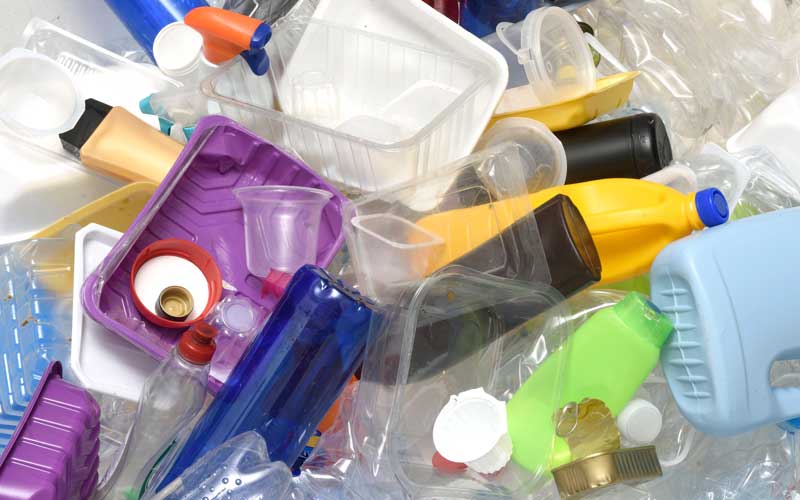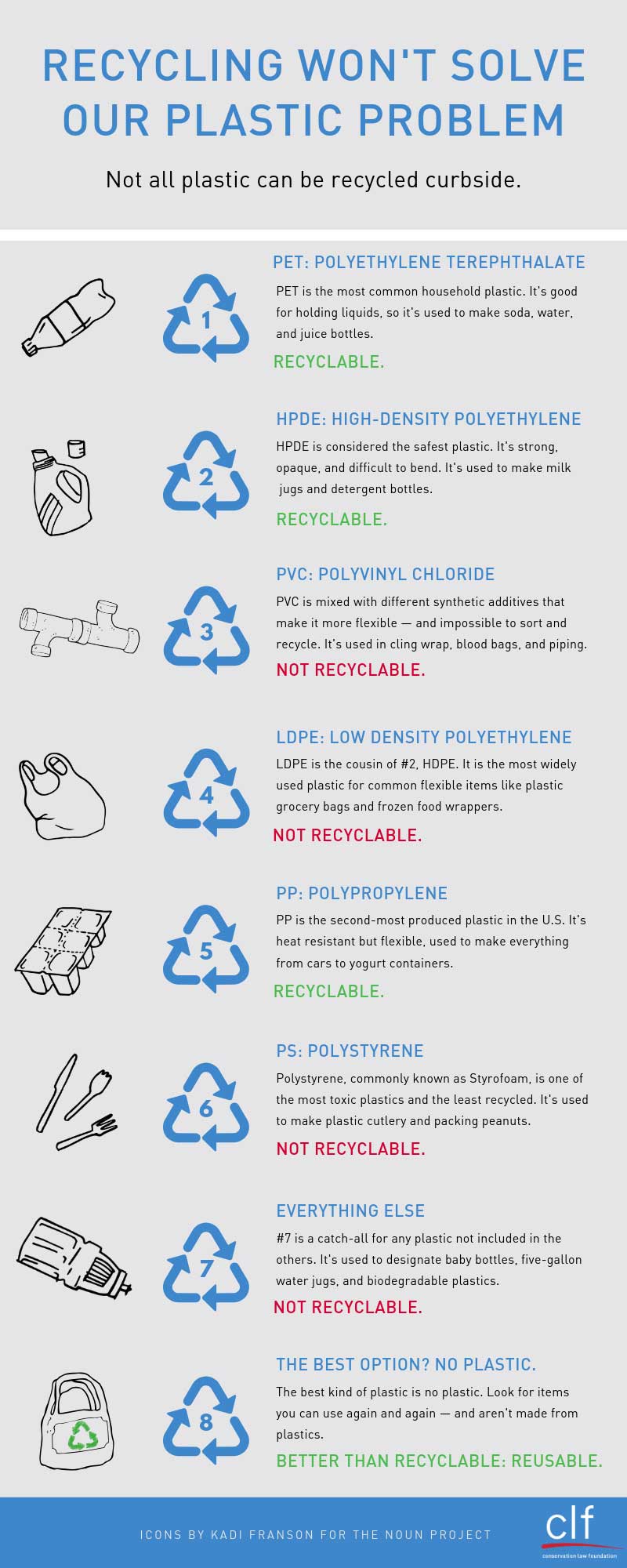
Not all plastic is recyclable, and more recycling won't solve our plastic problem. Until a new system structurally uses less plastic from the beginning, we have a handy guide to what can and can't go in the bin. Photo: Shutterstock
Plastics are everywhere. They’re in our cars, packaging, to-go containers, and clothes. We use them to eat, to insulate our homes, and to contain our laundry detergent. And with single stream recycling — where everything goes into one container for pick up — it’s easy to think that we can put any plastic in the recycling bin.
The reality isn’t as straightforward.
Single stream recycling systems, which are common across New England, collect all recyclable items together. Plastics are sorted along with more recyclable items like glass jars, metal cans, and paper goods. But not all types of plastic are recyclable. And if recyclable plastic gets contaminated with non-recyclable plastic, it sends the whole bale straight to the landfill.
In this broken system, big waste management companies that provide recycling (like Waste Management and Casella) blame you for not recycling carefully enough. They say it’s your fault for contaminating a bin, for being a bad recycler. Instead of focusing on improving recycling within the current system, we need a new system that creates a structure for using less plastic from the beginning.
What’s in a Number?
Plastic items are labelled with a little number with the recycling logo around on it that indicates more specifically how the plastic was made. It’s called a resin identification number, or RIN. It runs from #1-7.
However, the recycling logo is deceptive. Just because a package or bottle has a RIN or recycling symbol does not mean it is recyclable. Instead, it indicates the molecular structure of the plastic, which we use to categorize what can and can’t be recycled. (On a structural level, almost all plastic is made from polluting gas and oil.)
In most cities and towns, plastics #1, 2, and 5 are good to go in the bin. But even plastics that can be recycled aren’t recycled at high rates. Some plastic items, like small bottle caps, could be recycled but are so small that they literally fall through the cracks at sorting facilities.
Other plastic products, like grocery bags, are recyclable in theory but not in a real-world recycling system. These flimsy plastic bags get tangled in the sorting machinery, often causing it to shut down. The remaining majority of the bags that don’t make it into the recycling bin contribute to dangerous landfill and incinerator emissions, or end up as litter in our parks, on our streets, or in our rivers and oceans.
For now, you can reduce the amount of plastic in your life, but we understand that you still can’t buy dish soap or a package of frozen peas or yogurt without buying the plastic containers they come in. So while we work to phase out plastics, we should keep recycling the items that can be recycled.
Here’s a handy guide to what can – and can’t – be put in your bin.




